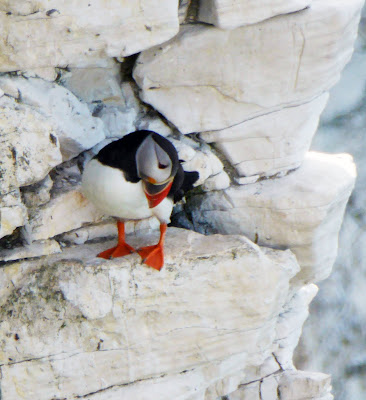We awoke to a (typically) grey Bank Holiday Monday, so decided to visit somewhere new, namely the Tudor tower at Layer Marney in Essex. We received a lovely welcome from members of the sheep community! I'm wondering if this is a Soay, or possibly a Soay-cross.

I cropped this photo as the bottom tier was simply a row of cars, but I feel the picture gives a reasonable first impression of the property, an incomplete Tudor palace built by Henry, Lord Marney, who held the influential post of Lord Privy Seal in the 1520s during the reign of Henry VIII. You begin to realise just how influential a man he was from the words on his tomb in the church,
'Henry, First Lord Marney, Sheriff of Essex, Chancellor of the Duchy of Lancaster, Executore of the Countess of Richmond, Privy Councillor to Henry VIII, Captain of the King's Bodyguard, Fought Battle of Spurs 1513 Knight of the Garter, Lord Privy Seal: 1522, Baron Lord Marney: 1523, Died in London May 24, 1523, Buried here at Layer Marney.'
The grandiose tower overlooks the river Blackwater and Essex coast. It was a shame there was so little sunshine as the view would have been much enhanced.
The tower (with its 99 steps) was a most imposing edifice.

The photo above was taken from the rear of the building, while we were exploring the flower beds ...
There were a couple of beehives in the grounds ...
... and the orange flowers on this huge plant were proving popular with the inhabitants - and also, I note, with a small green-headed insect. I asked David to stand by the plant (two pictures up) to give a sense of scale.

The bees were also busily at work on what I think is Verbena Bonariensis ...

There were some beautiful roses to set off the Tudor architecture ...


We noticed the quotation from John's Gospel (chapter 7) on the farmyard drinking trough. It seemed slightly strange, though, given that the verse addresses humans, rather than animals. It probably served as an encouragement to the farm workers who would have passed this way in the course of their work. My musings on the subject of inscriptions on water troughs and the like sent me to Google, where I found some interesting information about The Metropolitan Drinking Fountain and Cattle Trough Association.
We wandered round the pond, hoping there might be dragonflies since I have seen so few this year.

We failed to see any, but I noticed this emerald damselfly, which a kind iSpot enthusiast has confirmed as a Willow Emerald Damselfly (Lestes (Chalcolestes) viridis). It is a male; and from the coloration, apparently, it can only be L. viridis or L. barbarous. I am told that the pale pterostigma spots on the wings and the shape of the inferior rear appendages identify this as L. viridis. I am intrigued why one side of the thorax is gold and the other green.
If you walk down this long path from the tower, you can make your way towards the church, which is dedicated to St Mary ...

... passing the small Tudor-style knot garden en route.
Look at those mournful eyes ... and we loved the way in which the hinge on the armour has been rendered.
I thought you might like a couple of human faces, too, in the next couple of pictures ...
The upright creature above is a apparently a leopard.

What intrigued us about the face of Henry, 1st Lord Marney, in the photo above was the way in which the strands of hair had been made (just look at the honeycomb-like pattern where the hair ends): it reminded me, just a little, of trying to make millefiori beads out of coloured strips of Fimo!

Most of the walls were white, but our eyes alighted on a wall painting of St Christopher.

... such as this rather seal-like fish (or fish-like seal?). The figure had a sea serpent or eel around one of his ankles ...

... but what pleased me most was this little seahorse:

It was drawn so simply, and yet I felt it captured the very essence of these delicate creatures. I wonder whether this piece of sculpture on the roof of the tower building might also be a seahorse. What do you think?

We passed the roses on our way to find a welcome slice of malteaser cake and a pot of Earl Grey.
We took a last look around, noting the chimneys ...
... and the early signs of autumn. I like rosehips, but not in August!
Once again we had few butterflies to report. We saw one rather camouflaged Meadow Brown near the chickens ...
Our biggest surprise of the day was finding this Magpie moth tucked in a groove in the marble effigy in the church. This slender insect, which was either dead or asleep (probably dead, I fear), was ironically a 'lifer' for both of us, if this birding term can be applied to insects! I only wish the photo had come out better ...













































